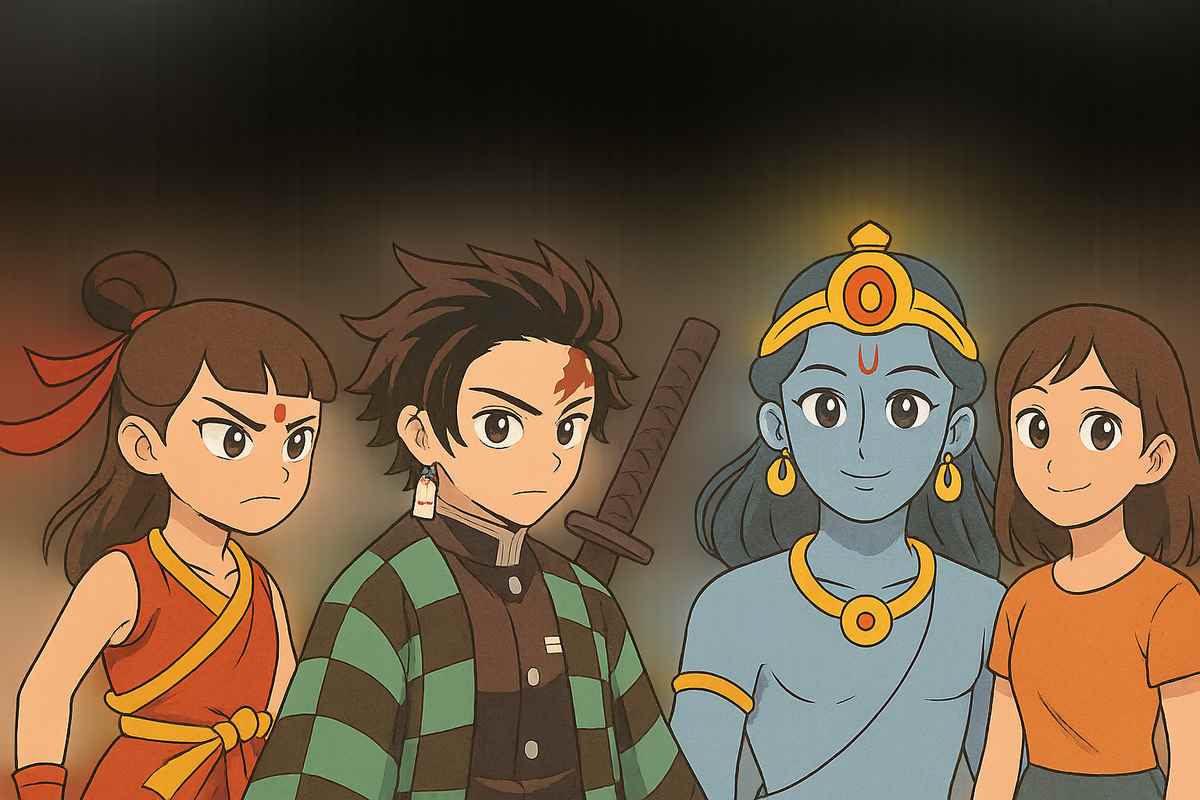Animation has long been considered Hollywood’s playground, but in 2025 it has become one of the most exciting arenas for global cinematic competition. Over the past year, films from China, Japan, India, and other regions have not only held their ground but have also redefined what a true box office success looks like outside the English-speaking world. Their achievements are reshaping how audiences think about animation and are sending a clear message to Hollywood that the stage is no longer theirs alone.
The most striking example comes from China. Ne Zha 2, a mythological fantasy, erupted onto the global stage with more than 2.2 billion dollars in ticket sales. It is not only the highest grossing animated film of the year but also one of the most successful non-English language films ever made. Its blend of cultural mythology, dazzling action, and emotional storytelling reached far beyond Chinese borders. This is more than financial success. It represents a cultural shift. Audiences now expect animated films that are thematically rich, visually ambitious, and emotionally powerful, rather than simple glossy entertainment designed only for children.
In Japan, anime continues to prove its unstoppable influence. Demon Slayer: Infinity Castle is still making headlines months after its release, attracting fans from Seoul to São Paulo. Its sustained box office run highlights the power of loyal fandoms and the draw of serialized storytelling. What began on manga pages has become a global phenomenon, showing how Japanese animation can leap from niche cultural origins to worldwide cinematic triumphs.
India is beginning to carve out its own space in this movement. Mahavatar Narsimha, released earlier this year, has already earned more than 300 crore rupees globally and ranks among the top animated films in Indian history. Its success marks a turning point. Indian audiences are clearly ready to embrace animated universes rooted in their own mythology and cultural traditions, and they are rewarding creators who dare to tell those stories with scale and spectacle.
Behind these successes lies a mix of technology, ambition, and new distribution models. Advances in animation tools, AI-assisted rendering, and more affordable production pipelines have leveled the playing field. Studios outside Hollywood are no longer limited by the weight of massive budgets. Instead, creativity and cultural identity have become the new competitive edge. Technology has widened the door, but human imagination remains at the heart of what makes these films resonate.
Distribution is also transforming the way animated films travel. Many international releases now begin with festival premieres or limited theatrical runs and then quickly move to global streaming platforms. This dual life allows films to build prestige through critical attention while also reaching mass audiences almost immediately. The result is that a viewer in Brazil or Nigeria can experience the same story as someone in Tokyo or Madrid within days of each other, creating a sense of global community around cinema that once felt impossible.
Of course, the rise of global animation is not without its challenges. Language barriers, cultural nuances, censorship rules, and competition for theater screens still exist. Some markets resist subtitled or dubbed releases, while theaters in many countries still give preference to Hollywood blockbusters. Yet the momentum is undeniable. When a film from China outperforms Hollywood tentpoles worldwide, or when Indian mythology in animated form fills theaters at home, it proves that the old order is being rewritten.
For Hollywood, this new reality is impossible to ignore. Studios can no longer assume dominance in the animation industry. They now face competitors whose stories emerge from entirely different cultural roots and whose audiences are eager for freshness. The way forward is not imitation but collaboration. Respect for cultural specificity and investment in stories that reflect more than just established brands will define the future.
Looking ahead, the titles to watch will come not only from established studios but also from independent animators, regional filmmakers, and cross-border co-productions. The real winners will be the films that combine technical excellence with cultural authenticity and emotional depth. These are the stories that will build lasting global appeal.
The lesson for audiences is clear. Animation is no longer just about bright colors and familiar franchises. It is a stage for bold, universal stories that reflect the voices of many cultures. By paying attention to these films, viewers discover not just entertainment but also new ways of seeing the world.
In 2025, global animation is not the shadow of Hollywood. It is its own powerful force, a battlefield of creativity, and often the leading voice in modern cinema. The films that succeed are not simply the ones with the biggest budgets but those that carry cultural weight, emotional honesty, and universal resonance. For audiences everywhere, that means more stories worth watching, and for world cinema, it means a future richer than ever before.









